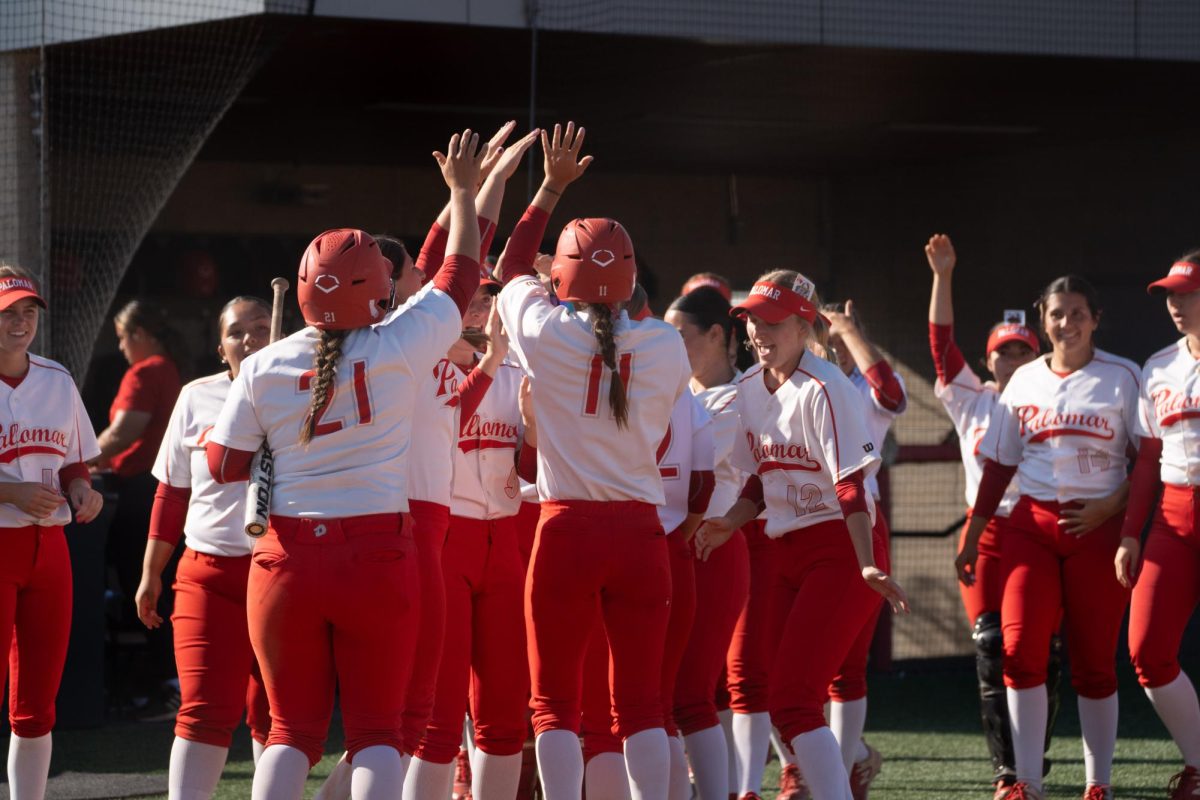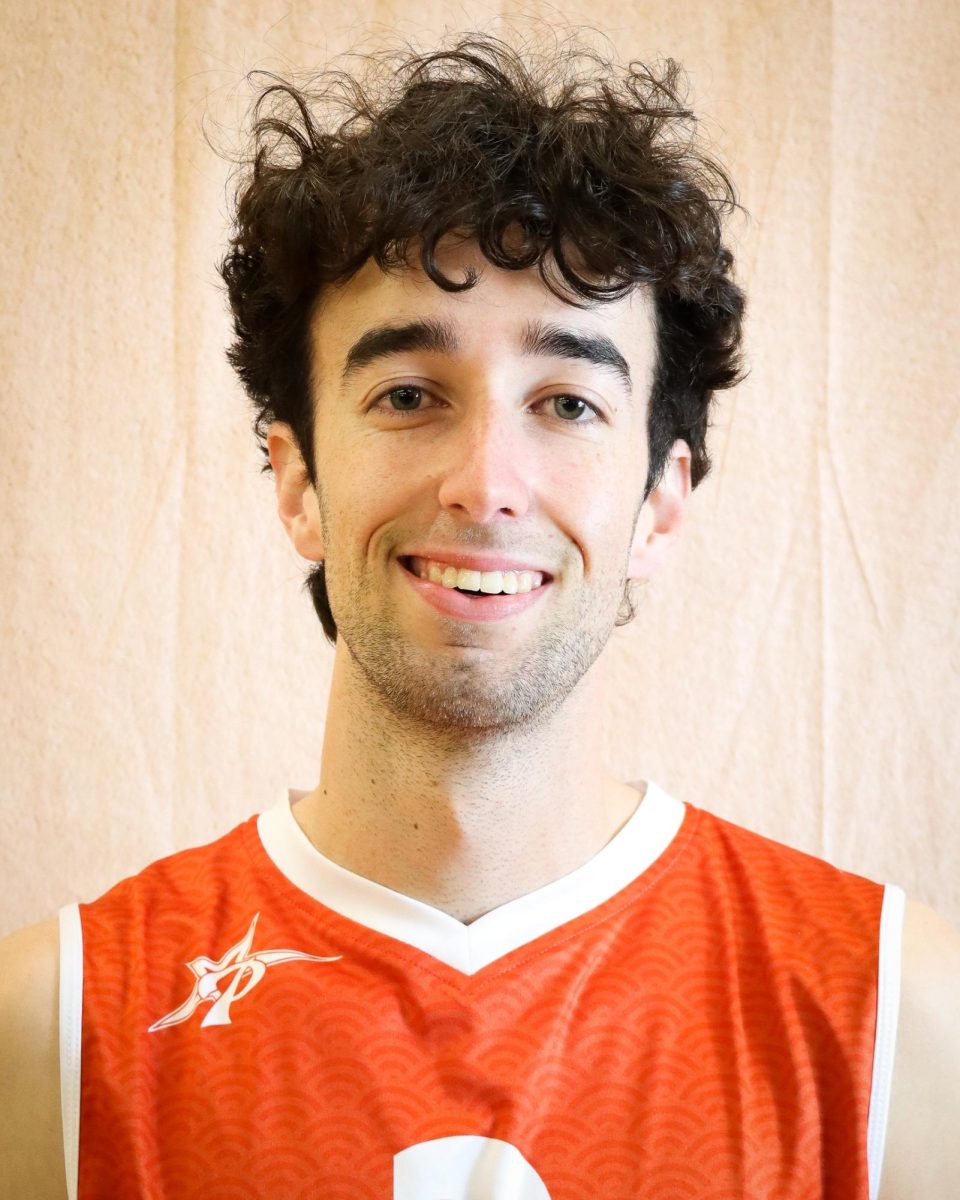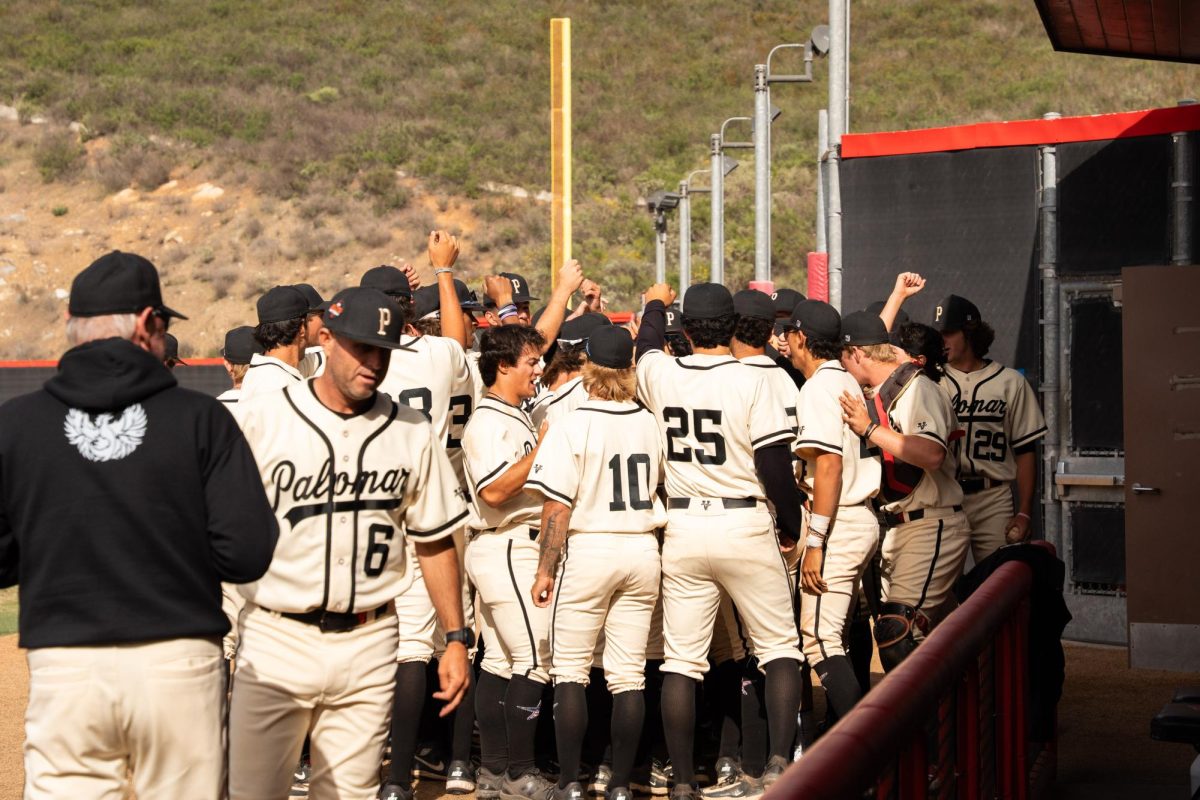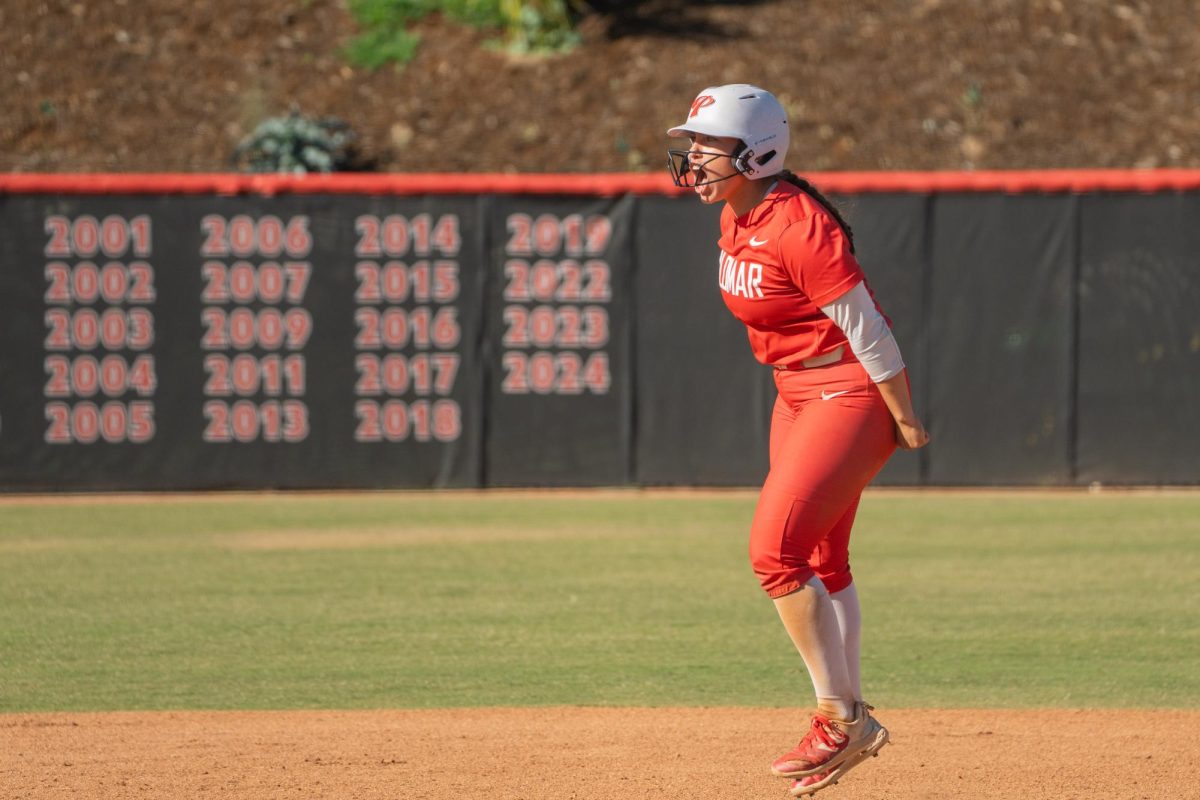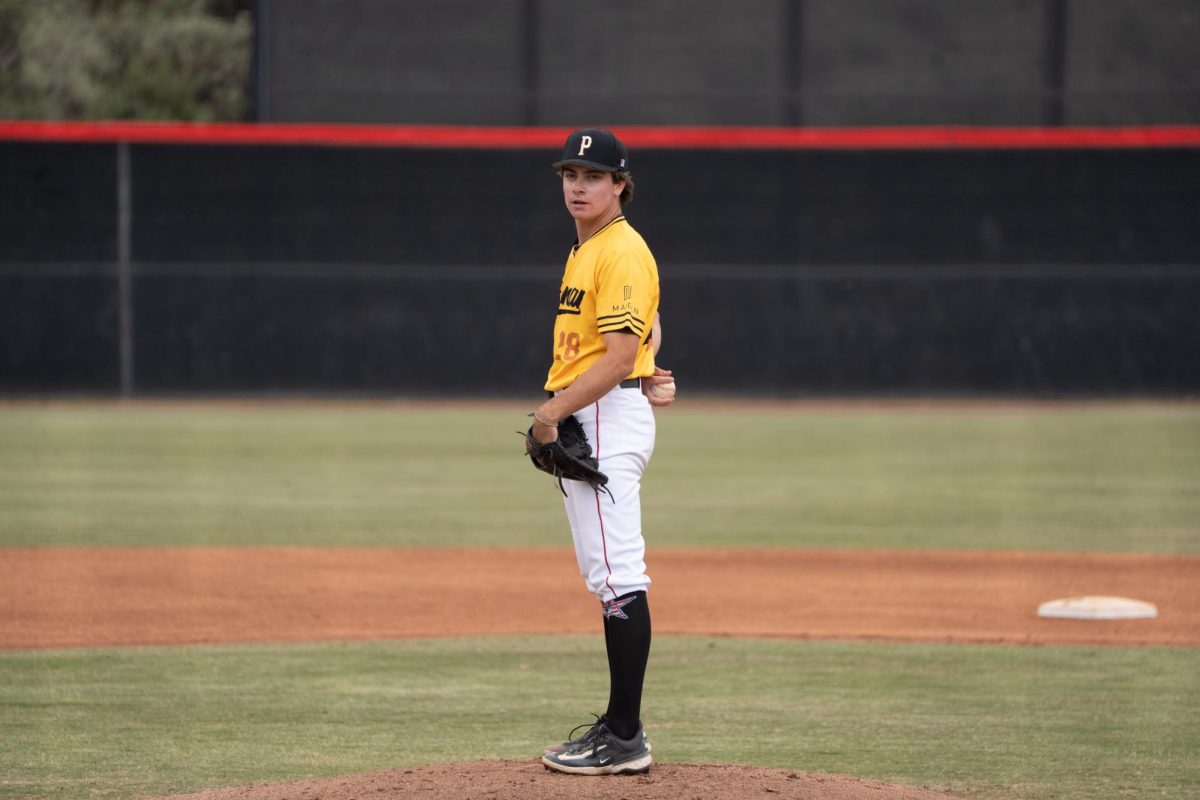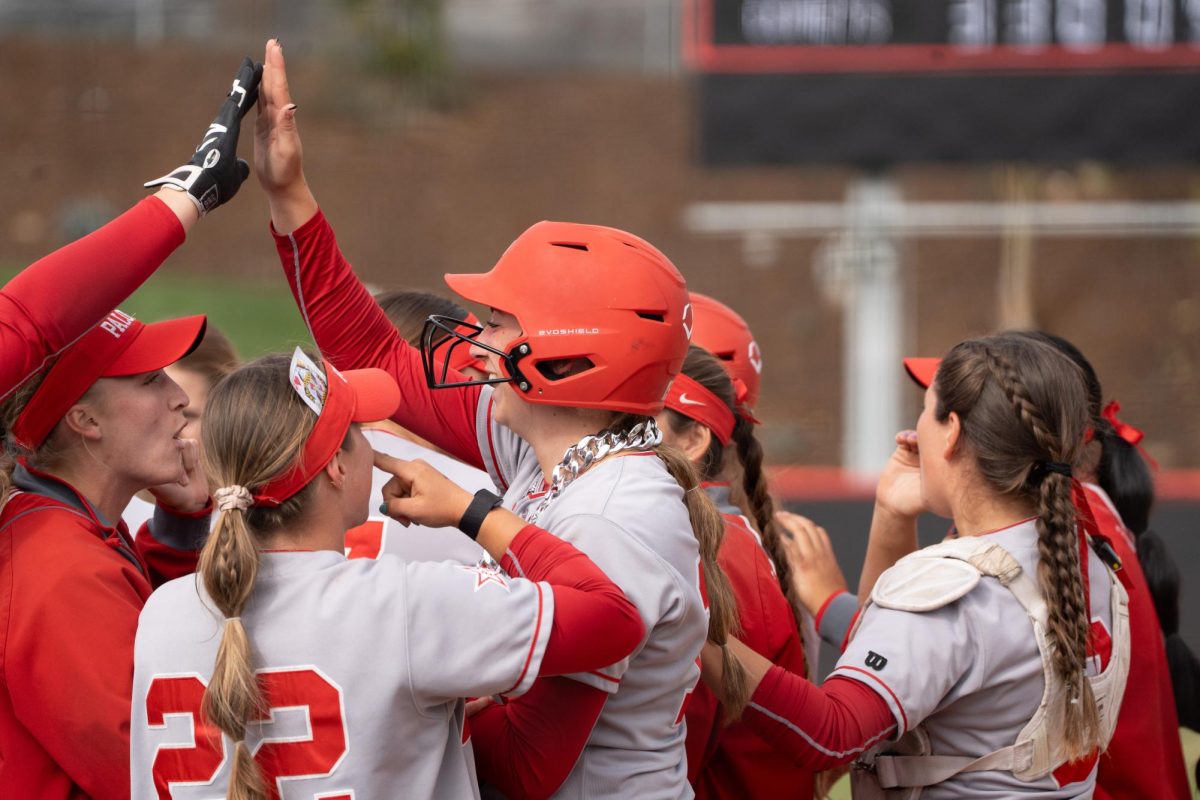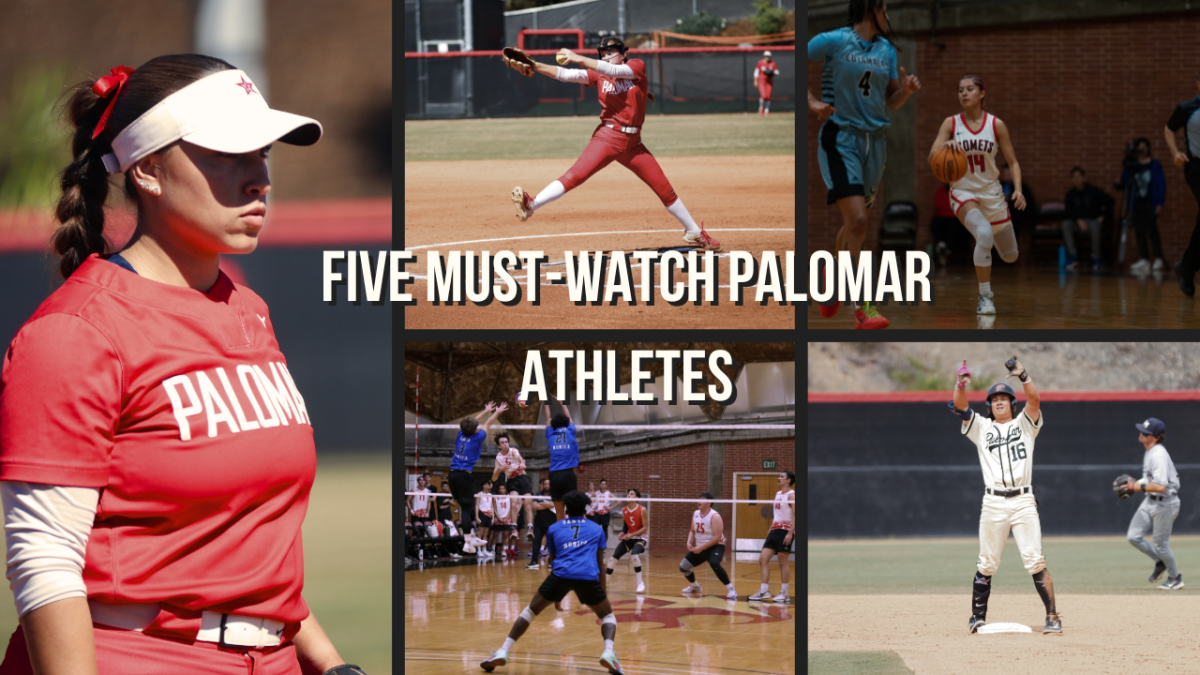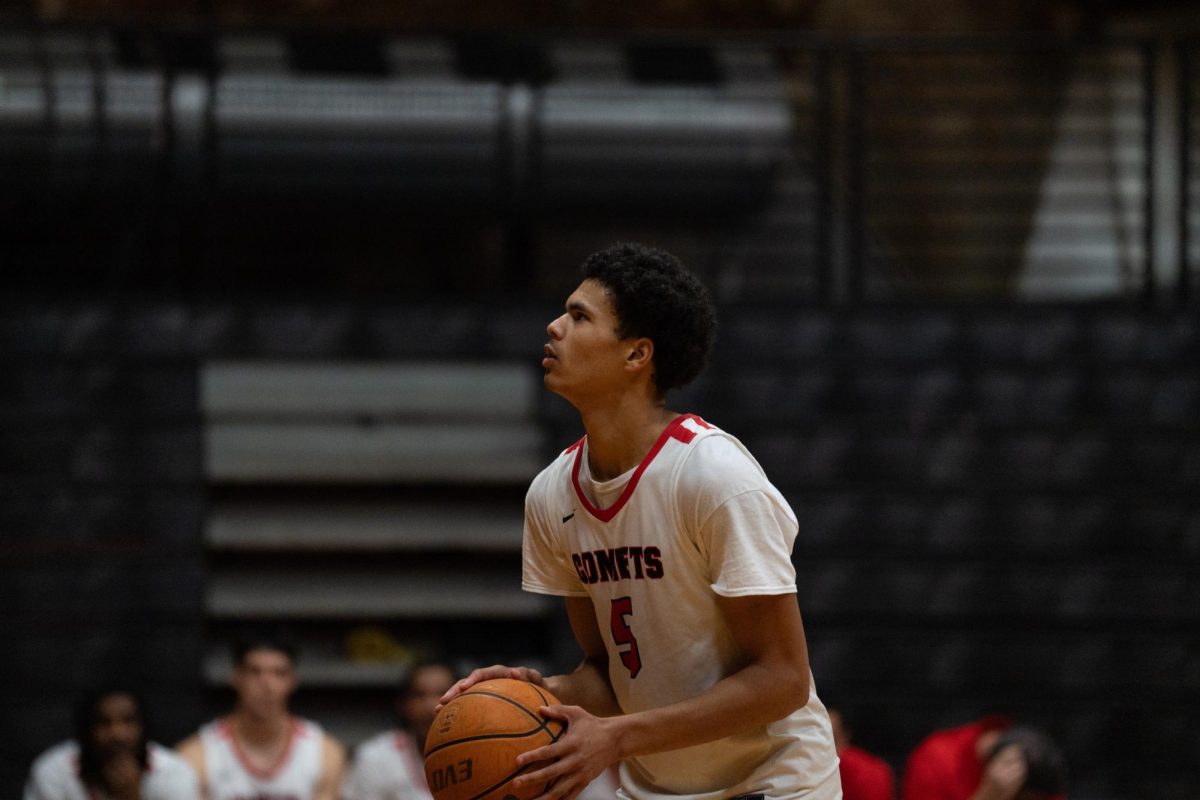
They’re there to pick up Palomar’s athletes when they fall or get hurt, and use specialized training to get them back in the game.
Palomar’s training staff ensure the well-being of the school’s student athletes, through sports-specialized training. This not only requires a knowledge of the body, but also a passion for it. Comet Trainers are also vigilant in their guard against concussion-related injuries in all sports.
Felicia Heise, one of Palomar’s athletic trainers, talked about the knowledge of the mechanics of the body that is required to be a sports trainer, and also the different stresses that are put on the body in different sports, so that rehab and training can be specifically geared to each individual athlete.
“A swimmer is different than a catcher, so all the different sports mechanics you have to understand. You have to be able to break those down and understand what that particular person is putting their body though,” Heise said.
Heise also said the need to look at and form exercises for multiple areas of bodily fatigue, not just what is injured, especially when then these areas works off of each other. As the old adage goes, the leg bone’s connected to the hip bone.
There’s an importance held in relaying this information to the athletes through training them in their specific sport and explaining where tension falls on their body.
“We try to educate them, so that they’ll go back on the field and not have a recurring injury. We try not to just slam a Band-Aid on them, we try to fix them. That’s why I think we’re so successful,” Heise said.
As Heise explained, the hardest injury to overcome for many of these athletes is a damaging mindset and routine. Trust and honesty with the trainers is an important part of this.
“I’ve seen all these ugly looking things, but it’s really the mental aspect that I have to deal with and to get over that hurtle mentally with a lot of these athletes is difficult. You have to rebuild their trust and their drive to get them back on the field,” Heise said.
Alex Albert, a student intern at the training room and Kinesiology major, described his draw to being a sports trainer.
“I’d say it’s a passion, throughout high school I was working out and stuff. What can I do to further that? This training room provides a lot of that. It teaches you the mechanism of how people get injured and how to prevent that,” Albert said.
One of Palomar’s athletes that Heise had worked with was Kirk Kaliszewski, a wrestler in the 157-weight class who had torn his AC joint.
According to Kaliszewski, much of his training consisted of going through ultrasounds, stretching, and then strength training. As he put it, “I just went in there every day and worked, I saw results.”
Heise had to look at how wrestling as a sport puts a lot of stress on the upper body for long periods of time.
“It’s not like we can put them on a treadmill to just run around in circles, we really have to train within that sport specifically,” Heise said.
The aspect of informing and educating the students, mentioned by Heise, also goes into Palomar’s concussion protocol.
This is done through making sure that they know what a concussion is and not just operate under the assumption that it’s ‘passing out’, as Heise explained.
An innovation that the trainers have put in place is baseline testing. Heise explained baseline testing as a program that tests your cognitive memory in reference to what it has been in the past for an athlete after sustaining a concussion.
Once an athlete is cleared of symptoms of a concussion the trainers put them on a post-concussion test, to evaluate their cognitive memory in reference to when they took the test without a concussion.
“They have to be within a five percent radius of the score, but that’s not our protocol to put them back. We also put physical demands on them,” Heise said.
Heise also explained a need for the athletes to be honest with the trainers. Often that can be less than reliable though. So that the trainers have to utilize the power of suggestion, through questioning them and having them face the sunlight without wincing, to evaluate their mental state after a concussion.
“The only person their hurting by not being honest with us, is themselves,” Heise said. “We’ll let them know, if you’re not completely honest with us, you sitting here talking to me right now could the difference of you telling me the truth or sitting in a wheelchair sucking through a straw with your parents taking care of you for the rest of your life.”

